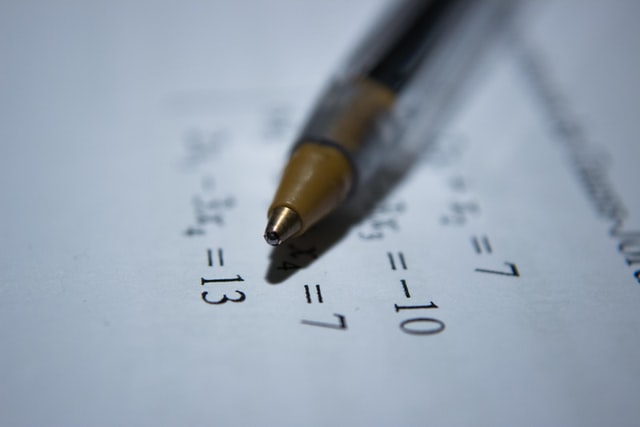Quite often, poker is presented as a game of math, psychology, and luck. While it is mostly true, the “math” part tends to scare many people away. In reality, to play poker decently you don’t need to have a Ph.D. in math or learn complex math concepts.
There are, however, a few things that are fundamental to every sound poker strategy. One of the most important is the poker EV, which we’ll take a closer look at in this article.

EV stands for the expected value
Expected value is a concept that applies not only to poker but also to other games. In fact, it can measure the outcomes of most activities in your life. Simply put, the expected value is an average outcome of an action if it were repeated multiple times.
Let’s look at the game of pure luck, roulette, to illustrate it.
What’s your expected value of betting on an exact number? Let’s assume you bet $100 on the number 21. After the ball is spun, there can only be two outcomes: you will hit the number, getting back your hundred and winning another $3500, or you’ll miss, losing the money. So, after one spin, you can be up $3500 or down $100.
But what is the AVERAGE outcome of one $100 bet? Let’s calculate its expected value.
If you place a bet on a number, there is a 1/37 chance that the ball lands on the number you picked which nets you $3500. On the other hand, there is a 36/37 chance that a different number will be hit, costing you $100.
To count the EV of betting $100, we have to multiply the probability of each outcome by the value of its result and add them together.
Therefore the EV of betting $100 or any given number equals
[1/37 * $3500] + [36/37 * (-$100)]
= [$94.59] + [0.973 * (-$100)] =
= $94.59 + (-$97.3) = -$2.71
What does this result mean? Every time you bet $100 on any given number at the roulette table, you lose $2.71 on average. In fact, if we ran the calculations for any other bet (like betting on red or black numbers), the result would be the same. Not great, is it?

How to apply EV at the poker table?
The example above shows us why roulette is a gambling game. You may win in the short term, but in the long term, it’s almost impossible as every bet loses you approximately 2.7% of the waged sum.
Luckily, things are different for poker, where your decisions can have drastically different EVs for each hand you play.
Let’s assume you are playing a wild $2/5 cash game. You are sitting on the big blind with $1,000. Before the hand, a guy named Kim, who sits on the small blind, announces that he’s feeling quite lucky. If everyone would fold to him, he’ll put all the money in the middle without looking at his cards.
After the cards are dealt, everybody folds to Kim, and he, being a man of his word, shoves his stack, putting you effectively all-in. What should you do in this situation?
For simplicity, we’ll assume it’s a game with no rake.
Let’s start with an easy example: you get dealt pocket aces (which win 85,2% of the time against a random hand) and snap him off. What’s the EV of that call?
EV = [85.2% * $1000] + [14.8% * (-$1000)] =
= $852 + (-$148) = $704
As to be expected: your call is literally printing money, and on average, you win $704.
Let’s look at a trickier example: you get dealt JT suited. Should you call? Let’s calculate it.
EV = [57.53% * $1000] + [42.47% * (-$1000)] =
= $575.3 + (-$424.7) = $150.6
What might be surprising for some of our readers, JTs is also a slum dunk call, netting you an average of over $150.

Playing poker well is essentially making decisions with positive EV
Obviously, the examples above are simplified and refer to relatively trivial hands. In fact, you can try to calculate the EV of almost every decision you are about to take. Still, most of the time, you’ll have to estimate many variables.
Let’s calculate a little more complex hand. Let’s say you’re on the river with AK and the board is A2347. There are 500 chips in the middle, and you have another 500 behind. You assume that roughly 60% of the time, your opponent has very weak holding and will fold, 20% he will call you with a worse hand, and 20% he will call you with his traps. Given your assumptions, what should you do?
Let’s start with calculating the EV of shoving the river:
EV = [60% * 500] + [20% * 1000] + [20% * (-1000)] =
= 300 + 200 – 200 = 300
So, betting the river will net you 300 chips on average, which looks nice. What about checking, though? If you check, you’ll win the 500 in the middle approximately 80% of the time and lose 20% to the opponent traps. Let’s see, what’s the EV of checking.
EV = [80% * 500] + [20% * (-0)] = 400 – 0 = 400
Some decisions have better expected value than others
Both plays in this example have a positive EV but in this scenario, it’s better to check, as your opponent won’t call you often enough with worse hands for betting to outperform checking back.
In a nutshell, that’s what poker is all about: you have to assume what your opponent is most likely to do and what the outcome of their actions would be.
That takes time, experience, and knowledge to apply correctly. What’s important is that most decisions you make with every hand have either slightly positive or slightly negative EV. It’s crucial to understand, however, that these small gains or small losses add up and constitute a big part of your overall win rate.
Now, imagine that studying certain situations can turn a few of your break-even decisions into ones winning you a dollar every hand at your average $1/2 game. Multiply it by hundreds or even thousands of hands you play, and it will make a big difference to your bottom line.
The same concept applies to tournaments and Spins. Sometimes minor adjustments multiplied by a large number of occurrences can make all the difference.
Small adjustments work wonders, especially in online poker environment where you can easily play a lot of hands
We know what we’re saying. We’ve coached hundreds of players and plugged various leaks in their game, helping them make better EV decisions and, consequently, more money.
We’ve prepared a complete poker strategy for playing Spin & Go’s and will share it with you if you chose to join our team. Even better, you can try our offer for 30 days for free.
So, are you ready to take your game to the next level?
